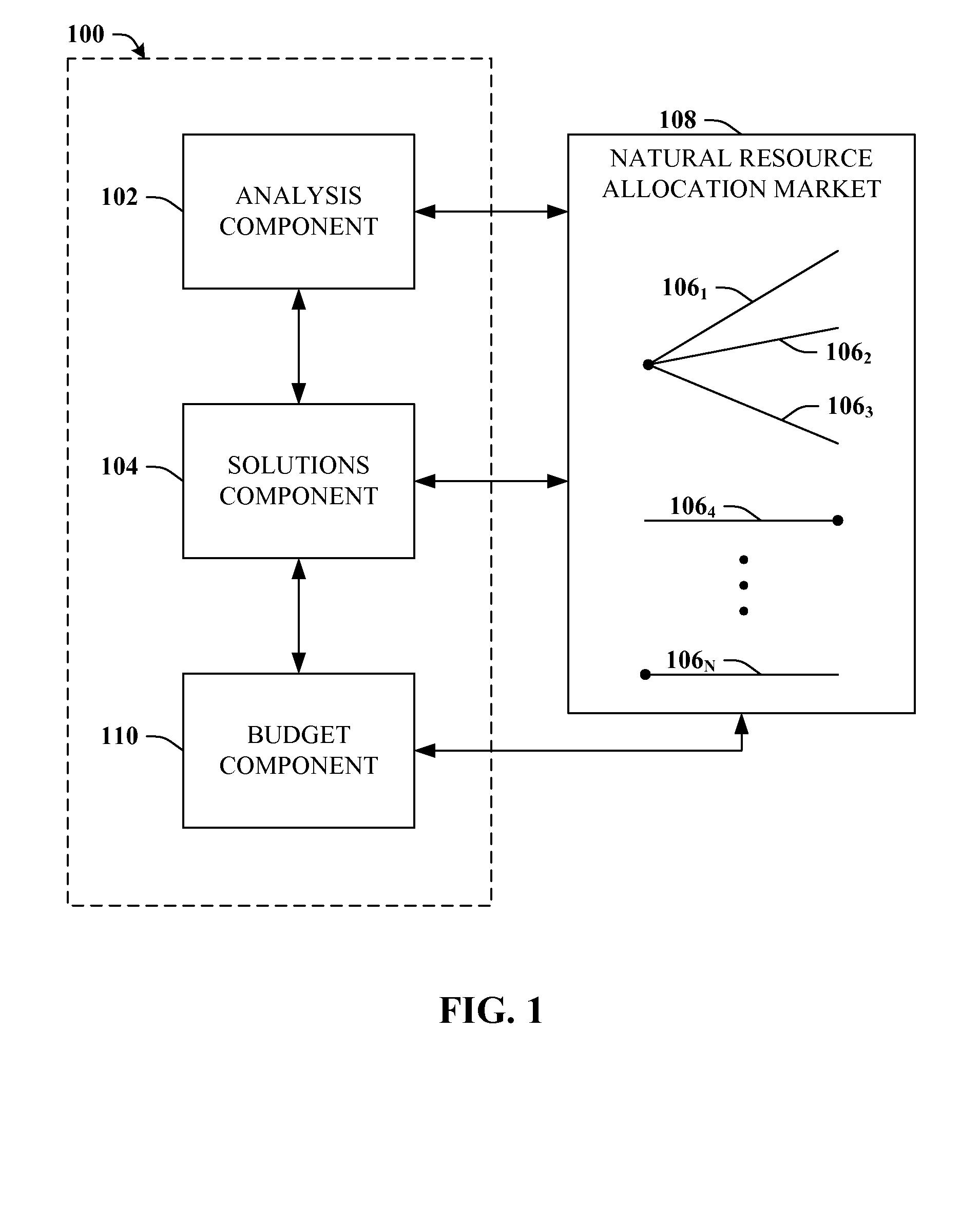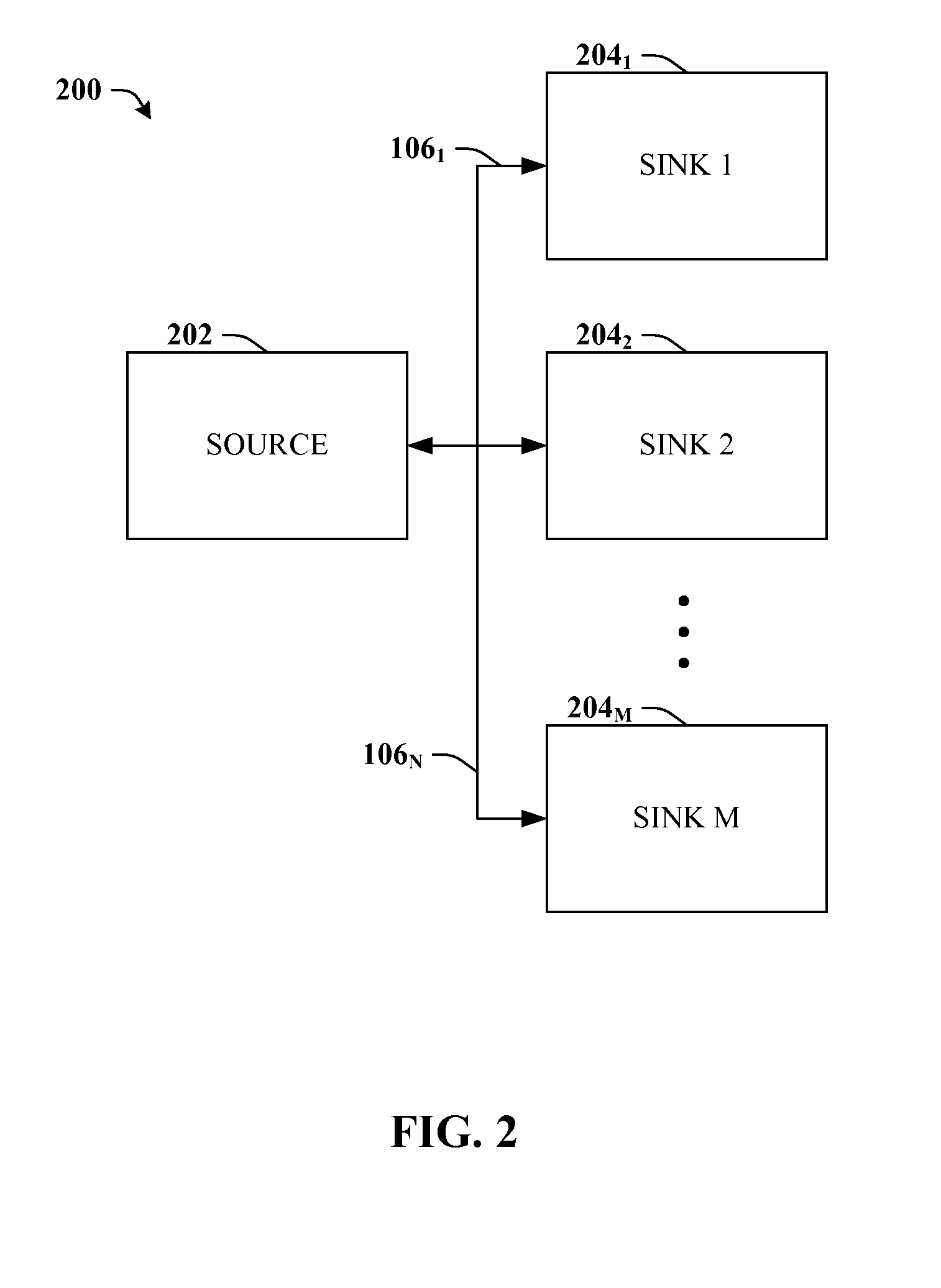Sequence of algorithms to compute equilibrium prices in networks
a network and equilibrium price technology, applied in the field of network equilibrium price computed by algorithms, can solve the problems of time-efficient algorithms, slow and/or resource-intensive, and do not have time-efficiency guarantees
- Summary
- Abstract
- Description
- Claims
- Application Information
AI Technical Summary
Benefits of technology
Problems solved by technology
Method used
Image
Examples
case 0
[0211]Cases infra can be employed to illustrate how to utilize Corollary 43 to compute equilibrium prices and allocations. In particular, the solutions component 104 can distinguish between four different cases:[0212] F1+F2
[0213]In this case, simultaneously, F1 branchings can be rooted at s1 and F2 branchings can be rooted at s2, and clearly, neither root can support more branchings individually. Consider such a packing of branchings. Let c1 be the set of edges in a minimum s1−s2 cut (which is of capacity F1) and c2 be the set of edges in a minimum s2−s1 cut. Clearly, this packing must saturate both these cuts and therefore they must be disjoint. Now price edges of c1 at rate m1 / cap(c1) and edges of c2 at rate m2 / cap(c2). Clearly, all KKT conditions are satisfied.
[0214]Next assume that F≦F1+F2. Now, the situation is completely analogous to situations above, and the three cases given there yield equilibrium prices and allocations.
[0215]Before review the other cases, a further word on...
example 47
[0224] We give an example showing an upper bound of essentially 1 / (k−1) on the efficiency of this market. The graph is a path of length k−1 on vertices v1, . . . vk, consisting of unit capacity edges. There are k source-sink pairs: (vi, vi+i), for 11, vk). The maximum multicommodity flow has value k−1 and sends one unit of flow on the first k−1 source-sink pairs. Next, suppose each of the first k−1 source-sink pairs have $1 and (v1, vk) has $H, where H is a large number. Now, the equilibrium will send 1−∈ flow of the last commodity and ∈ flow of the remaining k−1 commodities, where ∈ approaches zero as H approaches infinity.
[0225]In consideration of the branching market with three or more sources, let A ⊂ V be the set of sources, with |A|≦3. For S ⊂ V, let in(S) denote the capacity of edges incoming into set, S, and out(S) denote the capacity of edges outgoing from set S. Let B1=min {in(S)}, where the minimum is over all sets of vertices such that S ∩ A=Ø, S≠0. Let B2=min{in(S1)+in(...
case 1
[0229]Returning now to the four cases mentioned above, case 1 is as follows:[0230] There exist two minimal such sets, say S1 and S2.
PUM
 Login to View More
Login to View More Abstract
Description
Claims
Application Information
 Login to View More
Login to View More - R&D
- Intellectual Property
- Life Sciences
- Materials
- Tech Scout
- Unparalleled Data Quality
- Higher Quality Content
- 60% Fewer Hallucinations
Browse by: Latest US Patents, China's latest patents, Technical Efficacy Thesaurus, Application Domain, Technology Topic, Popular Technical Reports.
© 2025 PatSnap. All rights reserved.Legal|Privacy policy|Modern Slavery Act Transparency Statement|Sitemap|About US| Contact US: help@patsnap.com



